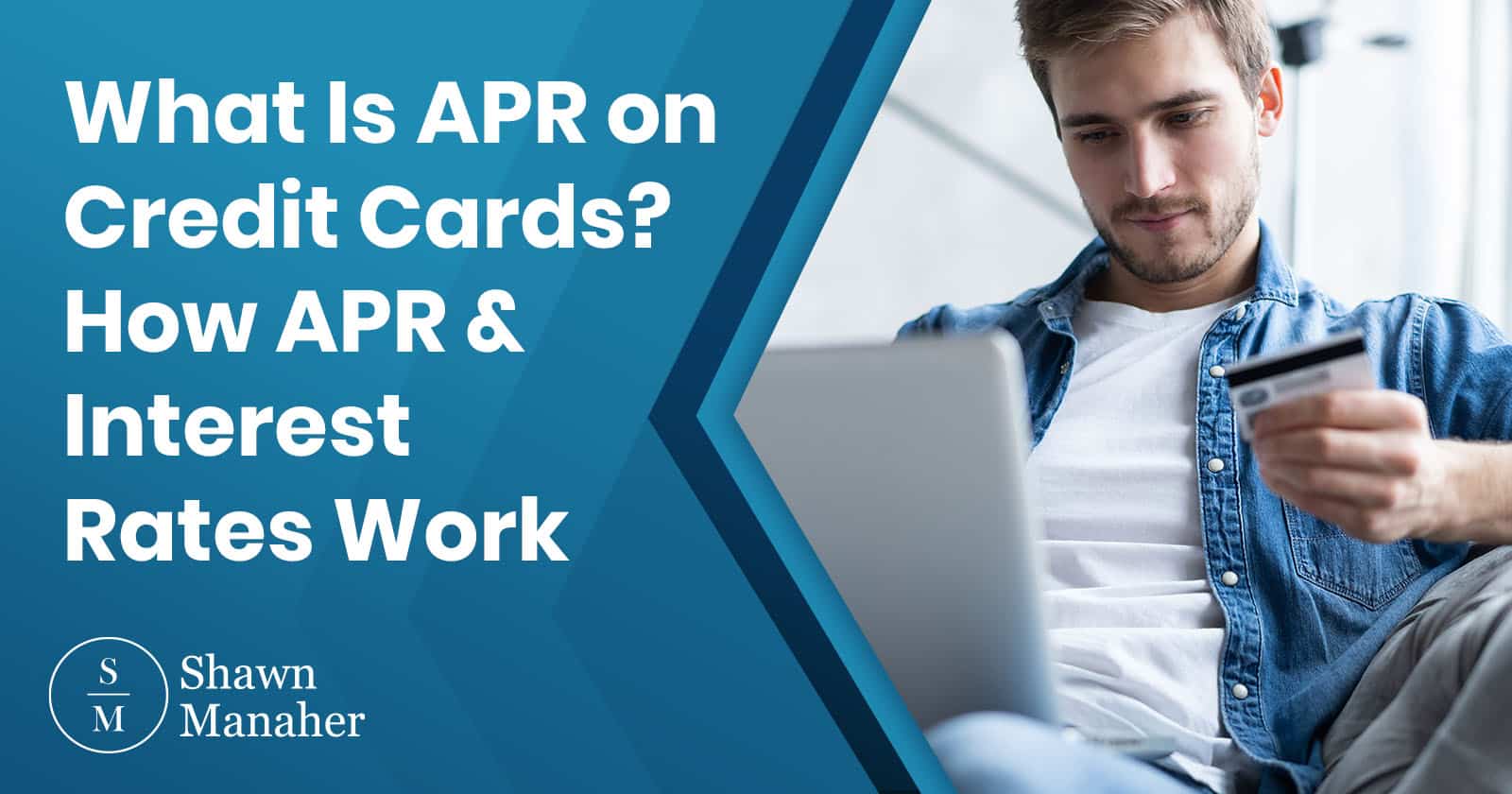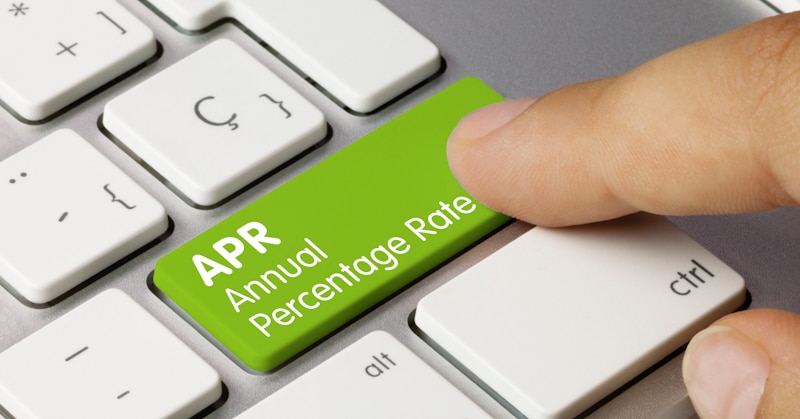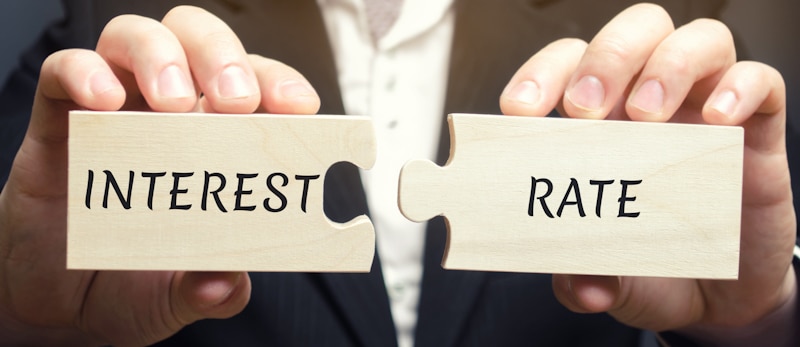

Ever feel like you’re still paying off that cart of groceries you charged to your credit card two years ago thanks to interest? At this point, you’re pretty sure you’ve paid $10 per banana. Okay, it might not be that bad, but opening your credit card statement to find that nearly half your repayment amount will go toward interest can be a real punch in the gut.
Yep, it’s that pesky APR causing all the trouble. But what is an APR on a credit card? Are you sure you know what you’re actually paying?
APR (Annual Percentage Rate) is the yearly cost of borrowing from your line of credit. An APR can have a huge impact on how much you owe, so understanding how it works and how credit card providers apply different APRs can help you make more informed decisions about credit card products.
Whether you’re a cardholder who simply wants to understand more about how your interest rate works or you’re a credit card newbie who’s trying to figure out what the heck an APR is before you apply, keep reading to discover what you need to know about the all-important percentage rate that’s been known to make even the most emotionless consumers cry.
Let’s dive in!

Before you sign a credit card agreement, the lender in question is obligated to tell you the APR on the relevant card offer. This APR is the official yearly interest rate you’ll need to pay if you carry a balance on your card.
Credit cards typically have a variable APR rather than a fixed one. This means your interest rate will fluctuate based on various factors, such as the federal prime rate. If the prime rate rises, your APR will increase too. If it decreases, you pay less in interest.
Although you’ll generally see a percentage range when reviewing the features of a particular credit card offer (e.g., the lender might stipulate an 18.99% - 25.99% variable APR), credit card companies assign an APR within the advertised range based on a few key factors:
As these factors are ever-changing, your APR may fluctuate accordingly.
The best APR you’ll ever get on a credit card is 0%--but it’s temporary. Even so, that interest-free period can drastically reduce what credit costs you over the lifetime of your credit card agreement.
The reality is that what defines a good APR is relative. As mentioned, your APR depends on your own credit, the type of credit card you’re applying for, and the prime rate. However, anything below average is definitely good. So, what’s the average?
According to the most recent data from the Federal Reserve, the average interest rate across all credit card accounts in Q3 of 2022 was 16.27%. That figure is currently rising as the Fed aims to curb inflation.
That said, the best way to get the greatest deal on a credit card is to shop around. Find out what APR you’ll be charged based on your specific credit profile for different cards, and then evaluate that APR against the card’s features to ensure you’re not getting ripped off by the lender.
Whip out your calculator because we’re about to get a little nerdy here.
Here’s what you need to know before we get stuck into the actual calculation and show you how your APR works:
Your APR applies to your account during each billing cycle. However, your credit card will have a grace period. The grace period is the set time you have to pay off your balance before your card issuer starts penalizing you with interest, typically between 25 and 55 days.
So, what happens when you don’t pay off your balance within the grace period?
Your credit card issuer will apply the following formula to your balance:
[Daily Periodic Rate] X [Days in Billing Cycle] X [Average Daily Balance] = [Monthly Credit Card Interest Charge]
The daily periodic rate is your APR divided by 365 days (i.e., the number of days in a year). Since some months have more days than others, creditors use this calculation to determine your daily rate.
Creditors calculate your average daily balance by adding up all the balances at the end of each day during the billing cycle in question. They then divide that sum by the number of days within that billing cycle.
Let’s assume you’re carrying an average daily balance of $2,000 with an 18.99% APR. Your daily periodic rate is 0.052% (18.99% divided by 365), and there are 30 days in the given billing cycle.
Now let’s plug those numbers into the formula to calculate your interest:
0.052% X 30 X $2,000 = $31.20
Therefore, you’d pay $31.20 in interest charges for the month.
Although the APR is just one factor in choosing the credit card for your needs, knowing how it impacts your payment can help you make better decisions.

Think your credit card is only subject to one APR? Think again.
Believe it or not, there are five types of APRs you can potentially encounter. And depending on your card usage and how quickly you pay off your balance, these interest rates can inflate your outstanding amount by quite a lot if you’re not careful. The key to avoiding these interest charges is to understand what each APR is and how it might come into play.
The most common of the APRs, the purchase APR is an interest rate applied to all credit card purchases. It generally comes into effect when you don’t pay card charges in full before the grace period ends and carry a balance over to the next month.
When you transfer the balance of one credit card to another (usually a balance transfer card), you’ll be charged an APR on that balance. Unlike the purchase APR that has a grace period, this APR applies immediately. Although you’ll typically find that banks tend to charge the same rate for both purchase and balance transfers, you should check with your bank as these APRs may differ.
To attract new customers, many credit card providers offer a special 0% or low introductory APR for a temporary predetermined time frame. This means they won’t charge you interest on any balance you carry over from month to month, as long as you make the required minimum payment. The average promotional period is around 15 months, but it may be shorter or longer depending on the lending institution.
Introductory APRs can apply to purchases, balance transfers, or both. In some cases, you may find that your bank offers different APR terms for different purposes. For example, you may opt for a card that offers a 0% APR on new purchases for the first 12 months and a 0% APR on balance transfers for 15 months. In other words, you won’t be charged interest during the 12 and 15-month timeframes, respectively.
However, there is a caveat. Suppose you don’t settle your balance in full before the end of the introductory period(s). In that case, some credit providers will apply what’s known as deferred interest. This is all the accrued interest since the initial purchase or balance transfer date. As you can imagine, this could potentially result in a whopper of a credit card bill, so making payments on time each month is crucial.
As with a debit card, you can withdraw cash from your credit card. The downside is that this type of transaction will generally incur a significantly higher APR, as well as a cash advance fee. In addition, you’ll start accruing interest instantly (i.e., there is no grace period).
What many cardholders don’t realize is that transactions other than receiving physical cash may be viewed as cash advances. This includes purchases of foreign currencies, lottery tickets, and casino chips. Therefore, unless you’re facing an emergency, try to avoid any scenario that involves drawing cash from your credit card at all costs.
Cardholder agreement violations, such as missed or late credit card payments, may result in a jacked-up APR (usually the highest APR of them all). Unfortunately, that isn’t the only thing you need to worry about here.
If you fail to pay or only pay past the due date during the introductory period, your provider may decide to terminate the offer and start charging you standard rates. In addition, non-payment can significantly damage your credit score.
According to FICO’s research on missed payments, someone with a fair to good credit score who has a 30-day missed payment will experience a drop between 17 and 37 points. Someone with a very good to excellent credit score will likely see a 63 to 83-point drop.
Those with a fair to good credit score who have a 90-day missed payment can expect their score to decrease anywhere between 27 and 47 points, while those with a very good to excellent credit score should plan for a 113 to 133-point drop. The impact of these changes is often immediate and devastating. Most consumers find that it can take a year or more to restore their score and even longer if their account was reported to collections.
On the plus side, you have the opportunity to restore your original APR if you make six months’ worth of consecutive on-time payments after the penalty APR was applied, as per the CARD Act of 2009. However, to avoid the penalty altogether, consider setting up the autopay feature in your bank account to ensure you don’t pay late or miss a payment entirely.

Before we wrap up and let you get back to reviewing your credit card options, there’s something we should clarify because it often confuses people.
An APR and interest rate are not technically the same thing.
To protect consumers against unfair and inaccurate credit card and billing practices, the Truth in Lending Act (TILA) requires lenders to provide relevant information about the cost of a particular loan so that borrowers can easily compare. As part of this effort to create transparency, credit providers disclose their interest rates as APRs (i.e., the actual yearly cost to borrow money).
Now when you’re looking at a credit product like a personal loan or mortgage, the interest rate and APR are two different things. While the interest rate is simply the percentage you pay on the outstanding balance, the APR takes into account the interest rate and all the other fees associated with borrowing the money. For example, the APR on a mortgage will account for the interest, application fee, closing costs, and any other expenses incurred during the transaction.
However, when it comes to credit cards, APRs and interest rates are the same. Even if your card issuer charges you an annual fee, it’s not an expense associated with borrowing money from that line of credit. The only borrowing-related charge you’ll encounter is the interest, which is why the finance world often uses the two terms interchangeably when talking about credit cards specifically. Be sure to keep this in mind next time you’re shopping around for a credit product other than a credit card.
There’s no doubt about it: when it comes to credit cards and their fluctuating balances, APRs can get super complicated and confusing. It’s easy to ignore how much you’re paying in interest and simply pay the amount owed each month, but this approach can get you into trouble fast—especially if you’re working within a tight budget or want to get out of debt.
Whether you’re a seasoned cardholder or you’re thinking about applying for a credit card product, make sure you take the time to learn about a particular card’s APRs and how much it’ll cost you to borrow. Paying interest is as bad as burning a pile of cash, so make every effort to circumvent—or at least minimize it—by paying off your balance each month and avoiding transactions like cash advances.

